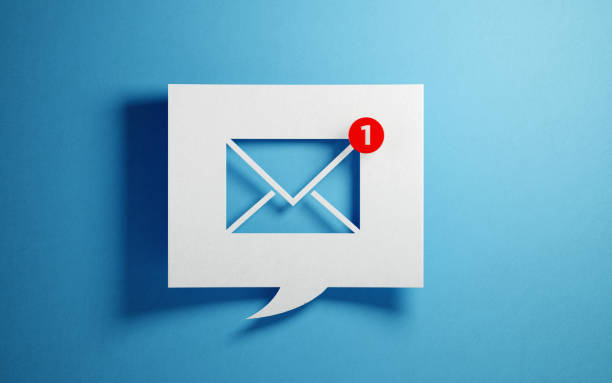If you’ve been wondering, “DKIM vs SPF – What’s the difference?” you’ve come to the right place.
One essential part of achieving successful email campaigns is by working on your email deliverability. Doing this will make your emails land in the primary inboxes of your leads. As a result, you’ll create new conversations and close new deals.
Moreover, two of the most crucial parts of guaranteeing good email deliverability are both SPF and DKIM. These two protocols protect email senders and receivers from potential risks such as spam, phishing, and email spoofing.
However, how do these work, and how do they improve deliverability? Keep reading to find out.
But first, let us define DKIM and SPF to understand them better.
DKIM vs SPF: An In-Depth Comparison
What is Domain Keys Identified Mail (DKIM)?
![]() (Source)
(Source)
DKIM stands for DomainKeys Identified Mail, which detects spoofed and fake sender email addresses. A sender can attach DKIM signatures, which are added to the message and assist the receiving inbox with verifying the source.
DKIM is a vital protocol because many phishing campaigns are spoofing entrusted domains.
For instance, some emails pretend to be a bank, company or trusted domain. Unfortunately, this still happens nowadays. However, DKIM is a powerful safeguard against scammers.
This email authentication protocol functions by linking an email back to its domain. On the other hand, DKIM practically tells your receiver’s inbox that you are an authentic domain regarding cold emailing. As a result, it gives the Email Service Provider (ESP) a reason to let your email message go through.
How Does it Work?
DKIM prevents spammers from posing as your domain or an email sender of your business. This email authentication protocol is a digital signature you can include in your emails so that receiving email servers can check your legitimacy.
DKIM functions with encrypted keys: your public key and private key:
Private key:
This key is unique to your domain and only available to you. It lets you encrypt your signature.
Public key:
This key is what you include in your DNS (using DKIM) so that the receiving mail server can recover and decode your signature.
How to Set Up a DKIM Record
First, you need to generate a public key. You’ll have to log into your email provider’s admin console. The steps also vary depending on your email provider.
For G Suite
Turn on your Google Admin console manually (as these turn off on default) for your DKIM signatures.
Once you have your public key, take the generated TXT record into your DNS TXT record.
Below is a simple overview of how to set up and test DKIM:
1. Publish your cryptographic key
The domain owner publishes the key and formats it as a TXT record in the DNS record.
2. Attach the unique DKIM
This server attaches the DKIM signature to the message’s header whenever an outgoing mail server sends a message.
3. Detect and decrypt the signature
Inbound mail servers (or your receiver’s email server) use the DKIM key to decrypt it. The message must have the expected values to be considered authentic and go through.
Here’s a more in-depth guide for using G Suite to send emails.
For Outlook
The process for setting up DKIM for Outlook is similar to G Suite.
First, create your DKIM keys in your Microsoft account. Once they are ready, new CNAME records that you need to copy and paste into a new entry in your domain’s admin panel will appear to you.
Once your DKIM signature is enabled, you can confidently send your email messages and land in your receiver’s primary inbox.
Here’s a more detailed guide if you use Outlook to send emails.
What is Sender Policy Framework (SPF)?

Another form of email authentication is the Sender Policy Framework (SPF). This protocol describes a validation process for a specific email sent from a mail server.
Your SPF records allow your receiver’s inboxes to let your email message through. This is essential when you do cold emails, as it trusts you as an authentic email sender. It also makes an excellent filter since most scammers won’t even try to add their SPF records.
SPF’s goal is to prevent spam by catching forgery. A domain’s owner can identify the same email servers the senders can send the message from with the help of SPF protocols.
Furthermore, SPF gives the email sender’s authenticity information to the receiver. Once the receiver gets it, the email provider confirms the SPF credentials by looking through the DNS records.
Meanwhile, if something is wrong or the message has failed the SPF authentication check, the receiving mail server will flag it as spam.
How Does it Work?
SPF pinpoints the authorized mail servers to send emails from your domain. If you have it in place, the receiving mail servers can confirm that the incoming emails did come from you.
Without your SPF records, your organization’s emails can be marked as spam because your recipients’ inboxes cannot verify that you are sending the email.
Or, in the worst-case scenario, they can block your emails.
Meanwhile, you won’t need to do anything once your SPF records are in place. However, you’ll still need to ensure they’re in place for every email domain you use.
A basic overview of how SPF records work:
1. Publishing: Your domain’s administrator publishes an SPF record, which is the policy that defines which mail servers are allowed to send emails. The domain’s overall DNS records store the SPF record under them.
2. Checking IP against the list of authorized IP addresses: The inbound server searches DNS for the bounce or return path domain rules whenever it receives an incoming message. It also checks the sender’s IP against the list of authorized IPs determined in the SPF record.
3. Taking action: Finally, the receiving server uses the rules indicated in the sender domain’s SPF record to determine what to do next: accept, reject, or flag it as spam.
How to Set Up an SPF Record
Setting up your SPF record is essential before sending cold emails. It only takes a few minutes and ensures your messages land in your receiver’s primary inboxes.
If you’re utilizing a custom inbox, check with your email provider to find the best way to set up your SPF.
Meanwhile, follow these steps if you use Outlook or G Suite:
For G Suite
Doing this is easy. Add a TXT record from your domain’s admin panel with the following text: v=spf1 include:_spf.google.com ~all`
The sender verification can take up to 48 hours. However, most situations only take a couple of minutes.
Check out Google’s instructions for setting up your SPF records in G Suite.
For Outlook
Setting up your SPF for Outlook is similar to G Suite. Firstly, head to your domain’s admin panel and add a new TXT record representing your SPF.
Use the SPF record: “v=spf1 include:spf.protection.outlook.com -all” if you use Microsoft 365 or Outlook to send your messages. However, like in G Suite, you’ll have to wait 48 hours before it goes live.
Meanwhile, use tools like Mail-Tester if you need to confirm that your domain is ready to use for sending emails.
Read this guide from Microsoft to troubleshoot SPF issues.
DKIM vs SPF: What’s the Difference?
(Source)
Now that you better understand DKIM and SPF, you might wonder what the difference between the two protocols is.
Simply put, DKIM confirms the authenticity of an email message by offering an encryption key and signature. These two work together to catch fraudulent content and avoid being in the spam folder while sending and receiving emails.
On the other hand, SPF lets senders determine which IP addresses might send emails to a particular domain.
At InboxAlly, we suggest not worrying about moving to a new email service provider or repairing a damaged sender reputation or domain. Try out our ultimate deliverability tool, and you’ll see the difference.
Why Do You Need to Set Up Your SPF and DKIM?
Now that we’ve explained the difference between the two protocols, you might wonder why you should use them for your email deliverability.
You see, many spam, viruses, and other scams were sent using counterfeit sender information during the early days of email. These still happen in this day and age. However, there are protocols like DKIM and SPF to confirm information about email senders.
SPF and DKIM are email authentication methods. In addition, they let mail servers detect and confirm who is sending trustworthy emails and who is not.
If you want to improve your email deliverability, setting up SPF and DKIM records is essential. Doing this also ensures that your emails reach your prospect’s primary inbox securely and safely.
Check out our SPF, DKIM, and DMARC [Infographic] guides for more information about how these email security protocols work to secure your email.
How About Domain-Based Message Authentication, Reporting and Conformance (DMARC)?
Another email authentication tool that may have been referenced on your email account is DMARC. It also protects your domain against spoofing.
Additionally, it requires you to include your SPF and DKIM records set up before implementation.
Simply put, DMARC tells email servers what to do if they receive a message from your domain. They can do nothing, quarantine the email, or completely reject it.
DMARC tells the receiving server what you’ve demonstrated if your SPF and DKIM records on outgoing emails don’t match the documents in your admin console.
For instance, if your DMARC policy is set to “none,” the receiving inbox will receive it even if there’s a risk the email isn’t from you.
Meanwhile, quarantine tells the inbox to send emails to spam, and reject tells them to reject them.
You’re not required to set up DMARC. However, it’s worth doing since it’s another protocol to confirm your email account’s health to ESPs and improve your email deliverability.
Read also: DMARC vs. DKIM – How Do They Differ and Which One Do You Need?
Wrapping Up

If you’re looking for a solution to enhance or maintain your email deliverability, setting up your SPF and DKIM records is essential. Doing this may seem complicated, but the steps are easy to follow. Additionally, all email providers or ESPs offer a detailed implementation guide.
Once you finally set them up, the process won’t take long and will be worth it in the end. Your email campaigns will reach your prospects’ primary inboxes instead of the spam folder.
We hope this in-depth comparison about DKIM vs SPF has helped you a lot. If you’re looking for the best email marketing solution for your small or large businesses, try InboxAlly now.
It’s the ultimate email deliverability tool that teaches inbox providers to reach their emails to their recipients successfully. You can even go for a 10-day free trial, with no credit card needed.
